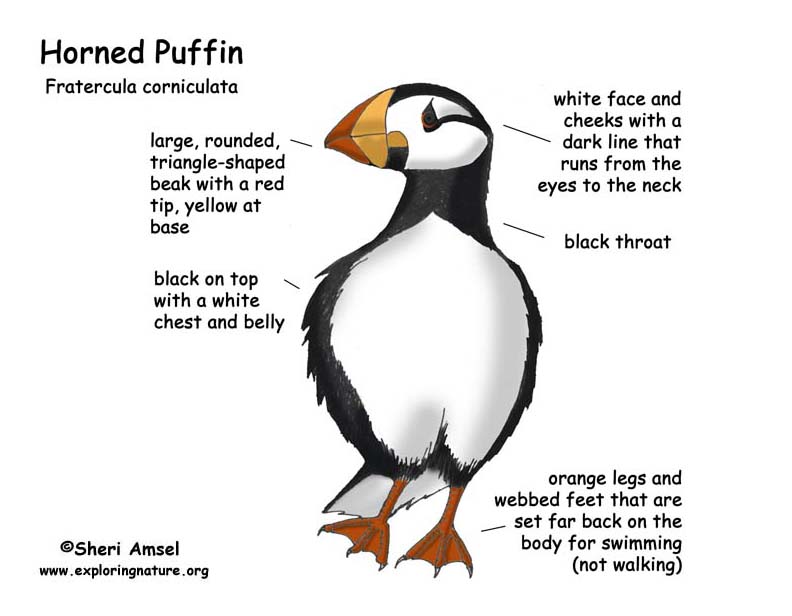

They winter off the coast of Alaska down to Washington.
They are found on the open sea. They breed on cliffs over the ocean or on rocky islands.
They are small birds with a large triangle-shaped beak with a red tip. They are black on top with a white chest and belly. They have a white face and cheeks with a dark line that runs from their eyes to their neck. They have orange legs and webbed feet that are set so far back that they don’t walk very well, but they are great swimmers.
They are better swimmers than flyers. They have to run along the water or dive off of cliffs to take off and fly.
They eat fish and other sea creatures. They can dive up to 80 feet and catch several fish at a time.
They mate for life, building a nest on a cliff or rocky place. They nest among many puffins in a colony. The female lays 1 egg that both parents keep warm (incubate).
Kingdom: Animalia
Phylum: Chordata
Subphylum: Vertebrata
Class: Aves
Order: Charadriiformes
Family: Alcidae
Genus: Fratercula
Species: F. corniculata
When you research information you must cite the reference. Citing for websites is different from citing from books, magazines and periodicals. The style of citing shown here is from the MLA Style Citations (Modern Language Association).
When citing a WEBSITE the general format is as follows.
Author Last Name, First Name(s). "Title: Subtitle of Part of Web Page, if appropriate." Title: Subtitle: Section of Page if appropriate. Sponsoring/Publishing Agency, If Given. Additional significant descriptive information. Date of Electronic Publication or other Date, such as Last Updated. Day Month Year of access < URL >.
Amsel, Sheri. "Puffin (Horned)" Exploring Nature Educational Resource ©2005-2024. December 14, 2024
< http://www.exploringnature.org/db/view/Puffin-Horned >

